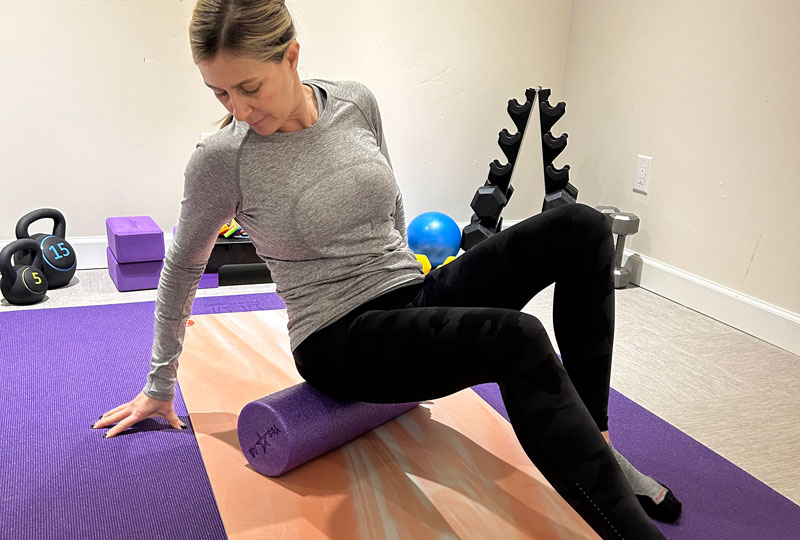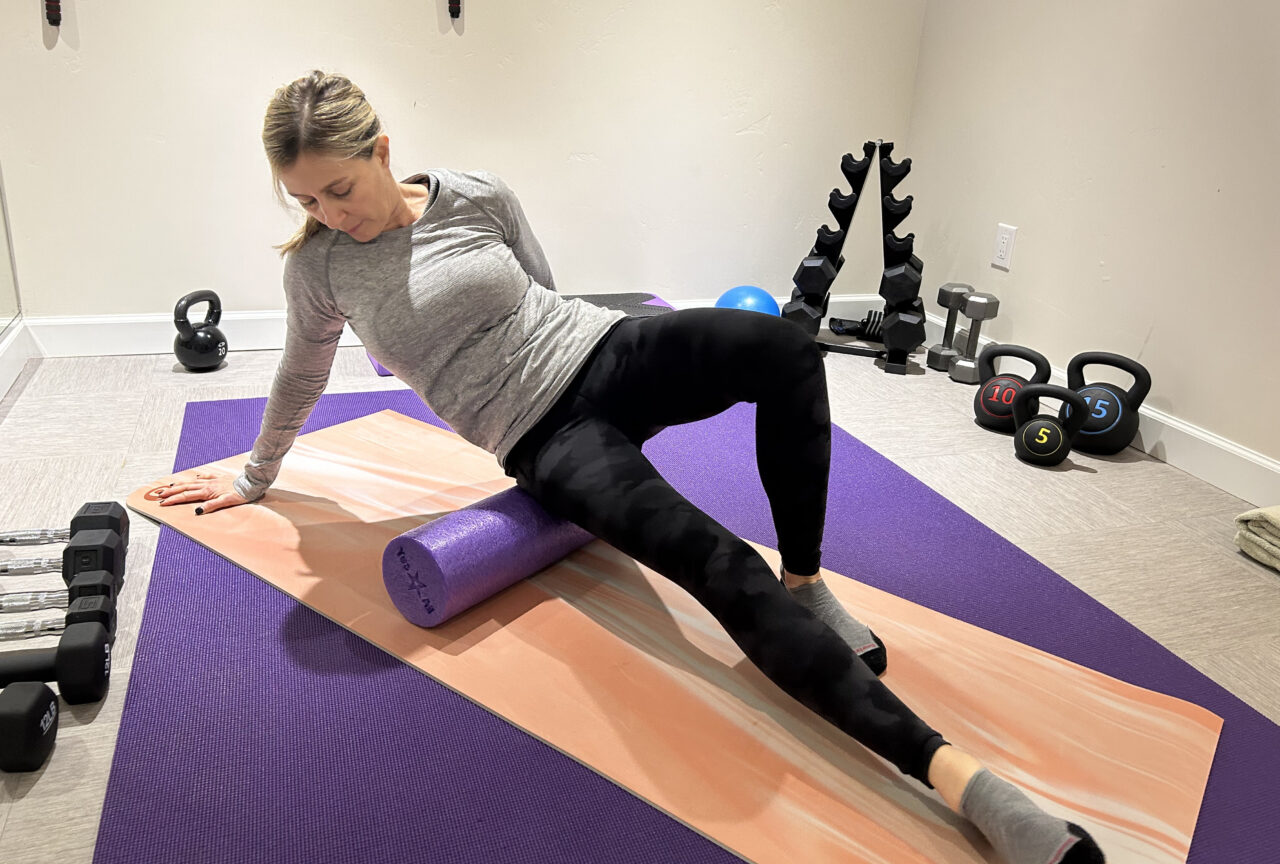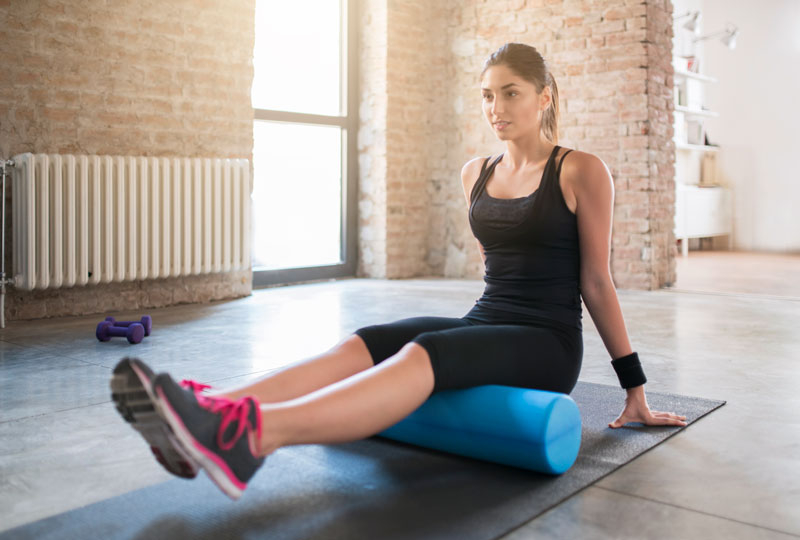Recover better from exercise with self-myofascial release.
Look around any fitness facility’s gym floor and you are bound to see a long, plastic foam cylinder — a foam roller. There may even been someone rolling around all over the foam, usually while grimacing!
A foam roller is an effective way to reduce muscle tension and increase muscle length for either a pre-workout warm-up or post-exercise active recovery. The technical term is self-myofascial release (SMR). It has become a widely accepted fitness practice.
Fascia is the layer of tissue that covers your muscles like a sheath. Things like stress, injury, overuse or even a sedentary lifestyle cause your fascia to tighten and become stiff, which can make you less flexible and limit your mobility around a joint, leading to pain and discomfort. You can release tension in the fascia by applying pressure to the muscles, similar to getting a professional massage.
The benefits of foam rolling
According to the American Council on Exercise, self-myofascial release can significantly reduce muscle soreness and increase flexibility when used on specific areas, twice per week for 15 minutes at a time. Foam rolling is generally considered safe for everyone, but as with any new physical activity, it’s a good idea to first check with your health-care provider, particularly if you have any heart or vascular illness or any chronic pain conditions.
To see the most benefits, try foam rolling regularly for:
- Increased blood flow
- Better range of motion
- Restoring muscle-length balance across joints
- Increased circulation and blood flow for a faster recovery
- Breaking up scar tissue
- Relieving soreness and stiffness
- Increase flexibility
Using your body weight, you can position yourself to target almost any soft tissue area by rolling back and forth (in a range of about 2 to 6 inches) from your core to your extremities. Do not roll along bones and joints, only muscles. Slowly roll the tender areas, working up to 30 to 60 seconds. You can expect some discomfort during your first few sessions of foam rolling. You may feel very tender or bruised at first, so be sure to start with just 5 to 10 seconds per area and rest for a day in between. If you have not experienced myofascial therapy work before, start with a softer foam roller and you can slowly progress to a denser version if you want to increase the intensity.
Always avoid direct foam rolling on the lower back (lumbar spine). Instead of using the roller perpendicular to the spine, position it parallel to the spine to target the upper and mid-back, and the glutes/sacrum area. By loosening other muscles surrounding the lower back (such as the hips and glutes), you can dramatically decrease pain and increase mobility, while protecting your spine and kidneys.
Three foam roller exercises to try
To get started, try these three foam roller exercises that are great for commonly tight areas for most people. If you are looking to add additional foam roller exercises, ask a certified fitness professional or physical therapist for help.
The glute roll
Sit on top of the foam roller. Angle the body to one side until the roller is positioned on the muscle between the hipbone and the sit bone. Roll in all directions in this area.

Iliotibial (IT) band and outer thigh roll
Lie on your side with the foam roller under your bottom leg. Roll between the bottom of the hip and the top of the knee joint.

Quadricep roll
In a plank position on the mat (facing down toward the floor), place the foam roller under the top of the thigh. Roll between the bottom of the hip and the top of the knee joint, making sure to rotate to the right and left to include the entire area.

With foam rolling, it’s especially important to listen to the feedback your body is giving you. Use physical sensations as a guide for when to apply more weight to the roller for more intense work, and when to back off. At first, rolling will most likely feel uncomfortable, so start with small doses of 5 to -10 minutes a day. Ease into the process to prevent excessive soreness or injury, then add time and additional exercises as your muscles adapt to the rolling.

The care right now that’s right for you
Vanderbilt Health operates a variety of walk-in clinics in Middle Tennessee, to take care of everything from sprains and sport injuries to flu shots, fevers, coughs and rashes. Search locations and learn more about the conditions treated there.

